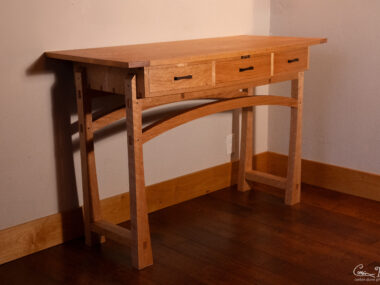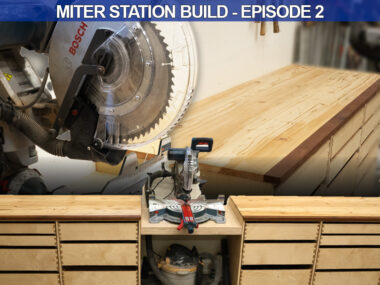Woodshop – Dust collection
I’ve been working on my “Woodshop” (aka: the garage) in preparation for some larger projects (in particular, kitchen cabinets). Jason Beaver, who works with me at Apple, clued me into how bad it is to breath wood dust. So, I ended up getting a dust collector.
Here’s a picture of my current layout before I began work on the dust collector:
Grinder stand:
The dust collector — I purchased the Grizzly G1030 3 HP Dust Collector. I wanted something that could move a lot of air, and supported 6 inch ducting, which is better for moving fine dust away from the machine and out of the air. This is a non-cyclone dust collector; my intent was to vent the air to the outside. The machine was also much cheaper than a cyclone — it was only $395, plus $74 shipping to my door. A cyclone would have been at least $750 for the machine alone, and probably would have been 1.5 or 2 hp and not 3 hp.
Of course, this required rewiring the shop, as it needed 220 volt. But, that was okay, as it isn’t too hard to do, and I really wanted a larger circuit breaker box and to make my table saw run 220 too.
I wanted to vent the air outside, and not hear the sound of the machine. So, I built a shed out back. I poured a 3″ concrete slab, 3′ by 8′ in size. This was my first concrete job, and it turned out pretty good. I ended up having to spend about $200-$300 on plywood and hardware, but most of the wood was recycled from the deck project.
Here’s a picture of the dust collector peaking out from its new home:
After building the back shed, I could cut the hole in the wall and run ducting. I ran 6″ out and dropped in a T to fork off to two machines and a floor sweep with 4″ flexible hose. The picture below shows one machine not hooked up yet (the jointer — which I need a dust hood for).
Then, I ran the 6″ directly over to the tablesaw:
I need some 6″ flexible hose, so the 6 temporarily drops to 4″ flexible tubing for now.
Next up is to run some more ducting over to my “welding area” to suck away all the fumes generated by melting steel.
I’m also going to build a new router table, and table saw out feed table. The out feed table will double as a work table and down draft sanding table (also hooked up to the dust collector).













Hey Corbin. looks real good and like the routing up and over- keep it off the floor! as much as possible
dad
You really shouldnt use pvc piping for dust collection. It can generate quite a bit of static charge, which combined with the fine dust/air mixture inside, can be and explosion risk.
edwarddes — that is a common misconception that was easily debunked.
http://www.sacramentoareawoodworkers.com/Articles/DustCollectionandPVCPipeDangersDebunked.pdf
Fine Wood Working also has an article on this, and if you think about it, explosion risk is very slim to none. There are no known cases of it happening, from what I can tell.
Chips from some woods are recyclable as horse bedding (poplar, maple, birch, sycamore), other woods should not be mixed in (walnut, rosewood). table saw, radial saw, sanding disk all make dust, rout those lines straight to the cyclone.
Jointer and thickness planer make chips, and can easily overwhelm small cyclones. Add a metal container for the larger chips, and dont let it get too full. Planer/jointer blades get dull quickly when recutting chips that have backed up. Every jointer I have seen so far has constriction problems which are only overcome by strong suction and periodic cleaning out (use a stick with the plug out of the wall).
Connect the ducting to the machines well, no leaks, but also with the knowledge that you are going in there weekly or more often for cleaning out.
Compressed ait is also useful, blow while the suction is on to get dust out of corners. Blow the ceiling and walls and the lights periodically.
Grain storage bins do explode from time to time, and every single shop I have ever worked in used metal ducting with static grounding wires. You really think every dust collection system failure has been written up? Most woodworking shops of size in the past century fed the dust collectors to a furnace for steam (heat and power), this long before OSHA, and probably without insurance (the days of overhead driveshafts and exposed belts, short hair really made sense then).
Suppose an insurance or fire inspector comes visit… Maybe you should check on code for this.
Oh, minimize blast gates, they all leak, many are prone to jamming.
Sorry, wish I had read the article first. As the lawyers for FWW may have insisted, it is full of qualifications and quibbles. For me the bottom line is, yes, you can probably get away with it, but the risk, however small, is not acceptable. You can eliminate it by running bare grounding wire inside the PVC.
BTW, what will you do with the dust? (stand upwind when emptying the bags).
[…] dust collection system lives behind the garage in a little shed I built just for it. Here is a post when I setup dust collection in the shop. The buttons on the wall turn it on and […]